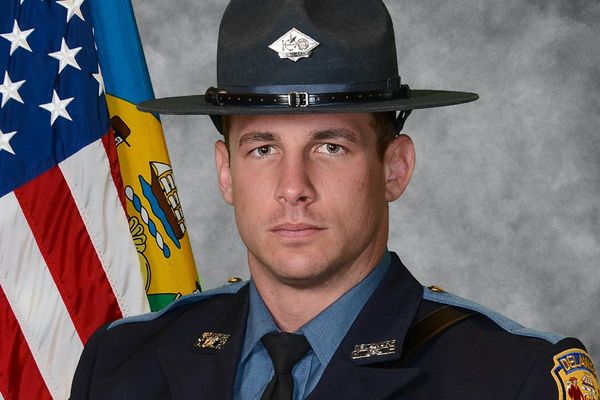
Like millions of Australians (if viewership figures are anything to go by) I’ve spent a lot of time watching reality television this year. Across all of these shows, from high-drama rose ceremonies, nail-biting immunity challenges or renovation room reveals, there’s one consistent recurring character: the sponsor.
It’s there serving up a microwave-ready meal on a date that promised a home-cooked dinner. It’s the app which allows construction workers to log building defects – forcing viewers to learn more about corking and waterproofing than the average couch slob will ever need to know. It’s seeing starving adults come close to tears over an orange four-door ute. Product placement is everywhere, and it’s just so, well, awkwardly obvious.
Where once we’d see reality show participants film an ad for dishwashing liquid or catch sight of a food delivery bag strategically placed on a coffee table, reality sponsorship and advertising has now reached dizzying new heights (or perhaps lows) where subtlety is out and shameless storyline integration is king.
While Chris Walton of media buying agency Nunn Media says product integration has “been a channel forever and a day”, he acknowledges things have kicked up a notch in recent times.
“More and more of the domestically produced content coming out of Australia is reality television; it’s kind of wall-to-wall reality. Outside of news, current affairs and sport, most evenings on the television now is a reality show of some description,” he says. Thanks to this increase in a genre ripe for #sponcon and the shifting economics of Covid-19, production companies are enabling the kind of spruiking that could put even the most deft social media influencers to shame.
First came Australian Survivor, where viewers got a face full of closeups of products mid-show, as starving participants sang for their supper at the behest of the show’s producers. Following a reward challenge featuring buckets of KFC, one competitor recited the fast-food giant’s famous tagline, asking his teammates, “Is this finger lickin’ good, or what?” Later, that same footage appeared repackaged in a commercial break.
In a different challenge, another competitor talked about how great it was that Tylenol had made it possible for her to use shampoo for the first time in 40 days. As the Media Watch host, Paul Barry, pointed out, the product placement “is anything but subtle”.
I’m surprised that @JLa_Paglia wasn’t asked to wear a T-shirt with a Tylenol logo on it. Maybe the KFC one is coming.#SurvivorAU
— Den 🏳️🌈 (@_YeahYeahNah) August 31, 2021
Then there was The Bachelor, which arguably takes out the award for the most cringeworthy product-placed storyline by working an MG car into a single date with a woman who was left “traumatised” from a previous car accident. Cue footage of the Bachelor interacting with the car’s smart screen, telling viewers “this car is full of safety features so hopefully she can relax and just have some fun”.
@TheBachelorAU confused🤔 are we watching the bachelor or a new youfoodz commercial? Probably could make it a little less overkill in that scene 🤣🤣
— Jaynie Morris (@MorrisJaynie) August 20, 2020
The Block is also on the hustle this year, with one couple using online shopping platform Catch to send their young children gifts and giving thanks to the retailer for “connecting families”. Down the road, another pair were lucky enough to receive a workout set that led to an impromptu topless gym session before, you guessed it, discussing the merits of their Catch haul to camera.
Walton says despite being jarring to some viewers, advertising storylines are a huge hit with companies as more traditional viewing habits die off, taking commercial breaks with them. “If you’re in the content it doesn’t matter how people watch it, you’ll be seen,” he says. “Rather than simply have a ‘wham, bam, thank you ma’am’ traditional ad, this allows a bit more exposure for the brand.” In other words, 30-second TVC slots may come and go, but in-built dialogue is forever.
And it’s not going away either. Just this week, Seven announced new projects that would use AI technology to “identify and tag products in Seven’s most popular programs … [letting] people buy what they see on screen, not just in the supporting commercial content.”
But Fiona Finn, an advertising lecturer at RMIT, says the move to content-integrated advertising poses real risks.
“The AANA [Australian Association of National Advertising] code is very clear about social media posts. In sponsored posts, social influencers are now required to use #sponsored or #ad hashtag.”
The same rule does not apply to promoting products on reality TV where the code states: “Where advertisers have made commercial arrangements for the branded products to feature as a product placement, and no other claim is made about the products, no label or disclosure may be required. Even though consumers may not realise the advertisers have made a commercial arrangement for their products to appear, the use of the branded products may be sufficient to distinguish the material as an advertisement or marketing communication.”
Finn is unconvinced. “I think we all underestimate the social power and potential danger of advertising.” She adds that the transition is “simply big brands moving around the streaming services’ ability to cut advertising out of the viewer experience”.
“Ethically, we all should worry, I think, about what we’re being fed.”
The challenge, Walton says, is finding a level of subtlety that satisfies brands without annoying viewers. “If it goes too far people will just switch off, and if you piss off viewers that’s no good for anybody.”







